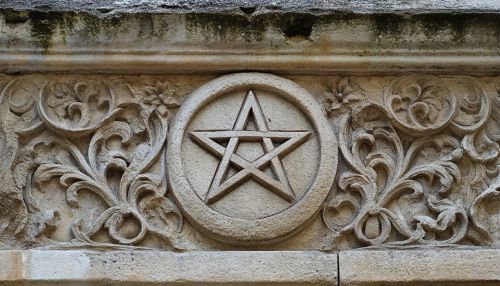Pentagram Archive
Introduction
The Pentagram Archive is a comprehensive collection of materials related to the study, history, and cultural significance of the pentagram, a five-pointed star often associated with various esoteric traditions, religious practices, and symbolic meanings. This archive serves as a repository for scholars, researchers, and enthusiasts interested in exploring the multifaceted aspects of the pentagram across different cultures and historical periods.
Historical Background
The pentagram has been a symbol of significance for thousands of years, appearing in various forms and contexts across ancient civilizations. Its earliest known use dates back to the Sumerians, who inscribed it on cuneiform tablets. The symbol was later adopted by the Pythagoreans in ancient Greece, where it was revered as a representation of mathematical perfection and harmony.
During the Middle Ages, the pentagram was often associated with Christianity, symbolizing the five wounds of Jesus Christ. However, its meaning evolved over time, and by the Renaissance, it became linked with alchemy and occultism. The pentagram's association with witchcraft and Satanism emerged in the modern era, largely due to its depiction in popular culture and literature.
Symbolic Interpretations
The pentagram's symbolism is diverse and varies widely depending on the cultural and historical context. In Western esotericism, it is often seen as a symbol of protection and balance, representing the five elements: earth, water, air, fire, and spirit. In Wicca, the pentagram is a sacred symbol used in rituals and ceremonies, symbolizing the interconnectedness of all things.
In contrast, some Christian traditions view the inverted pentagram as a symbol of evil or the Devil, largely due to its association with Satanic rituals. This interpretation has been popularized by literature and media, although it is not universally accepted among scholars and practitioners.
The Pentagram in Art and Architecture
Throughout history, the pentagram has been incorporated into various forms of art and architecture. In ancient Mesopotamia, it appeared on pottery and seals, while in medieval Europe, it was used in the design of cathedrals and churches. The Gothic architecture of the Middle Ages often featured pentagrams as decorative elements, symbolizing divine protection.
In modern times, the pentagram continues to inspire artists and architects, appearing in contemporary artworks and public installations. Its geometric form and symbolic resonance make it a popular motif in both traditional and avant-garde art.


The Pentagram in Literature and Popular Culture
The pentagram has been a recurring motif in literature and popular culture, often depicted as a symbol of mystery and magic. In Dante Alighieri's "The Divine Comedy," the pentagram is used to represent the five virtues of a knight. In modern literature, it frequently appears in fantasy and horror genres, symbolizing arcane knowledge and supernatural power.
Films and television series have also popularized the pentagram, often portraying it as a symbol of occult practices or demonic forces. This portrayal has contributed to its controversial reputation, despite its historical and cultural significance.
The Pentagram in Modern Spirituality
In contemporary spirituality, the pentagram is embraced by various neo-pagan and New Age movements. It is often used as a tool for meditation and spiritual growth, symbolizing the harmony between the physical and spiritual realms. Many practitioners wear pentagram jewelry or incorporate the symbol into their personal altars and rituals.
The pentagram's versatility and rich symbolism make it a powerful emblem for those seeking to connect with ancient wisdom and spiritual traditions. Its enduring presence in modern spirituality underscores its universal appeal and timeless significance.
The Pentagram Archive: A Resource for Research and Exploration
The Pentagram Archive is an invaluable resource for anyone interested in the study of this enigmatic symbol. It contains a vast collection of texts, images, and artifacts related to the pentagram's history, symbolism, and cultural impact. Researchers can access rare manuscripts, historical documents, and scholarly articles that provide insight into the pentagram's multifaceted meanings.
The archive also includes a digital database, allowing users to explore the pentagram's presence in art, literature, and popular culture. This comprehensive resource is designed to support academic research and foster a deeper understanding of the pentagram's role in human history.
